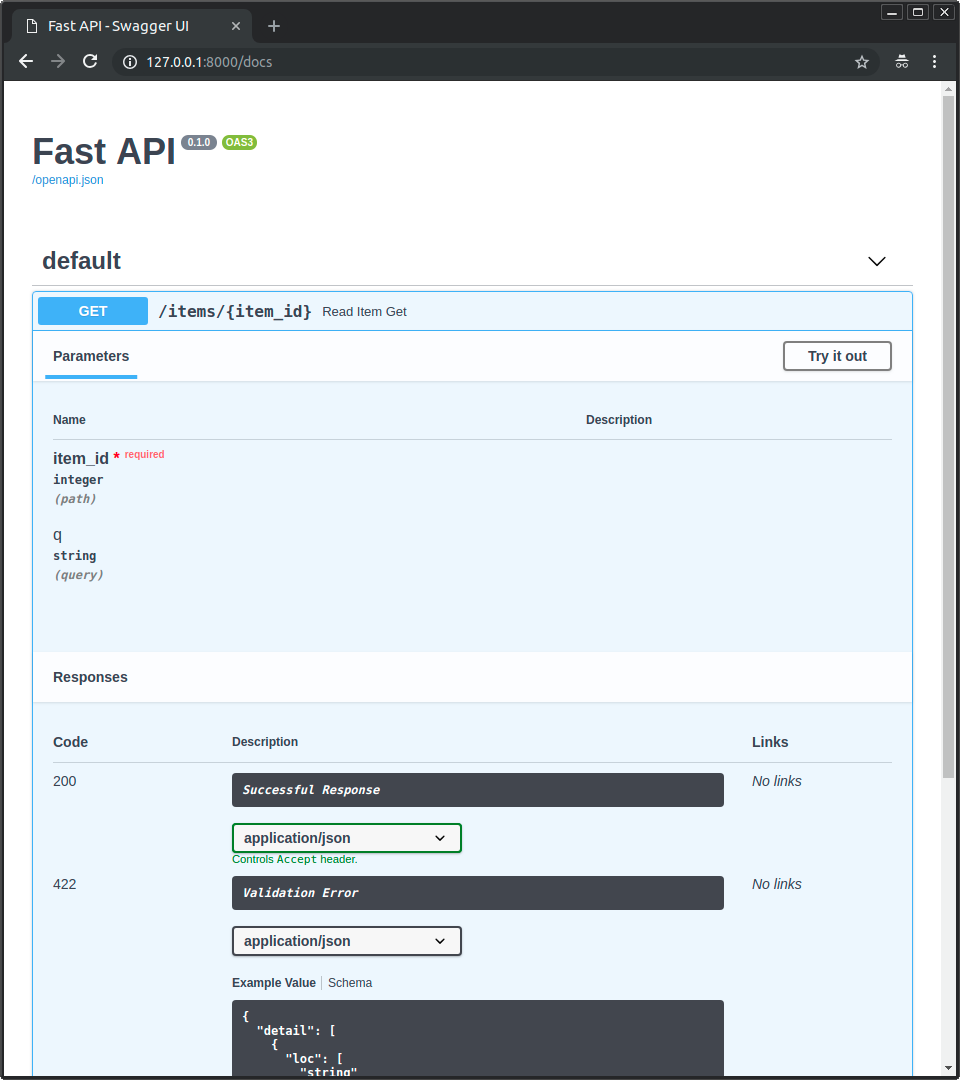- Sort Score
- Result 10 results
- Languages All
Results 1 - 10 of 373 for sample (5.62 sec)
-
docs/en/docs/advanced/generate-clients.md
## Custom Operation IDs and Better Method Names You can **modify** the way these operation IDs are **generated** to make them simpler and have **simpler method names** in the clients. In this case you will have to ensure that each operation ID is **unique** in some other way.
Plain Text - Registered: Sun May 05 07:19:11 GMT 2024 - Last Modified: Thu Apr 18 19:53:19 GMT 2024 - 10.5K bytes - Viewed (0) -
fastapi/security/oauth2.py
fields `username` and `password`. All the initialization parameters are extracted from the request. Read more about it in the [FastAPI docs for Simple OAuth2 with Password and Bearer](https://fastapi.tiangolo.com/tutorial/security/simple-oauth2/). ## Example ```python from typing import Annotated from fastapi import Depends, FastAPI from fastapi.security import OAuth2PasswordRequestFormPython - Registered: Sun May 05 07:19:11 GMT 2024 - Last Modified: Tue Apr 02 02:48:51 GMT 2024 - 21.1K bytes - Viewed (1) -
docs/en/docs/alternatives.md
Requests has a very simple and intuitive design, it's very easy to use, with sensible defaults. But at the same time, it's very powerful and customizable. That's why, as said in the official website: > Requests is one of the most downloaded Python packages of all time The way you use it is very simple. For example, to do a `GET` request, you would write: ```Python
Plain Text - Registered: Sun May 05 07:19:11 GMT 2024 - Last Modified: Thu Apr 18 19:53:19 GMT 2024 - 23.2K bytes - Viewed (0) -
docs/en/docs/benchmarks.md
* But it provides you the tools to build simple web applications, with routing based on paths, etc. * If you are comparing Starlette, compare it against Sanic, Flask, Django, etc. Web frameworks (or microframeworks). * **FastAPI**: * The same way that Starlette uses Uvicorn and cannot be faster than it, **FastAPI** uses Starlette, so it cannot be faster than it.Plain Text - Registered: Sun May 05 07:19:11 GMT 2024 - Last Modified: Thu Apr 18 19:53:19 GMT 2024 - 3.4K bytes - Viewed (0) -
docs/en/docs/advanced/middleware.md
app = SomeASGIApp() new_app = UnicornMiddleware(app, some_config="rainbow") ``` But FastAPI (actually Starlette) provides a simpler way to do it that makes sure that the internal middlewares to handle server errors and custom exception handlers work properly. For that, you use `app.add_middleware()` (as in the example for CORS). ```Python from fastapi import FastAPI from unicorn import UnicornMiddleware app = FastAPI()
Plain Text - Registered: Sun May 05 07:19:11 GMT 2024 - Last Modified: Fri Mar 10 18:27:10 GMT 2023 - 4K bytes - Viewed (0) -
docs/en/docs/tutorial/response-model.md
{!> ../../../docs_src/response_model/tutorial002.py!} ``` Now, whenever a browser is creating a user with a password, the API will return the same password in the response. In this case, it might not be a problem, because it's the same user sending the password. But if we use the same model for another *path operation*, we could be sending our user's passwords to every client. !!! dangerPlain Text - Registered: Sun May 05 07:19:11 GMT 2024 - Last Modified: Thu Apr 18 19:53:19 GMT 2024 - 17.9K bytes - Viewed (0) -
docs/en/docs/contributing.md
</div> Now you can check in your code editor the newly created directory `docs/ht/`. That command created a file `docs/ht/mkdocs.yml` with a simple config that inherits everything from the `en` version: ```yaml INHERIT: ../en/mkdocs.yml ``` !!! tip You could also simply create that file with those contents manually.Plain Text - Registered: Sun May 05 07:19:11 GMT 2024 - Last Modified: Thu Jan 11 17:42:43 GMT 2024 - 14.1K bytes - Viewed (0) -
docs/en/docs/tutorial/first-steps.md
Plain Text - Registered: Sun May 05 07:19:11 GMT 2024 - Last Modified: Thu May 02 22:37:31 GMT 2024 - 12K bytes - Viewed (0) -
docs/en/docs/tutorial/testing.md
{!../../../docs_src/app_testing/test_main.py!} ``` ...and have the code for the tests just like before. ## Testing: extended example Now let's extend this example and add more details to see how to test different parts. ### Extended **FastAPI** app file Let's continue with the same file structure as before: ``` . ├── app │ ├── __init__.py │ ├── main.py │ └── test_main.py ```Plain Text - Registered: Sun May 05 07:19:11 GMT 2024 - Last Modified: Thu Apr 18 19:53:19 GMT 2024 - 6.2K bytes - Viewed (0) -
docs/ru/docs/tutorial/first-steps.md
 ### Альтернативная документация API Теперь перейдите по адресу <a href="http://127.0.0.1:8000/redoc" class="external-link" target="_blank">http://127.0.0.1:8000/redoc</a>.
Plain Text - Registered: Sun May 05 07:19:11 GMT 2024 - Last Modified: Thu Apr 18 19:53:19 GMT 2024 - 13.1K bytes - Viewed (0)